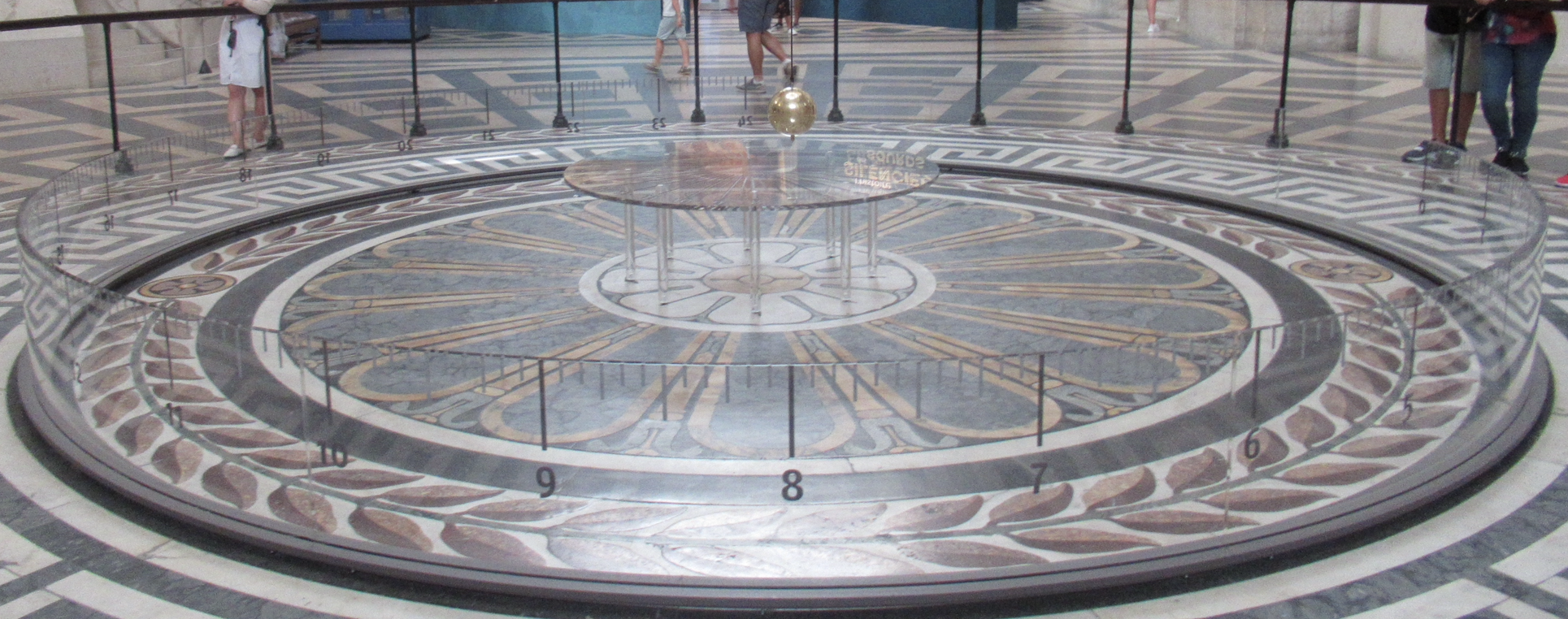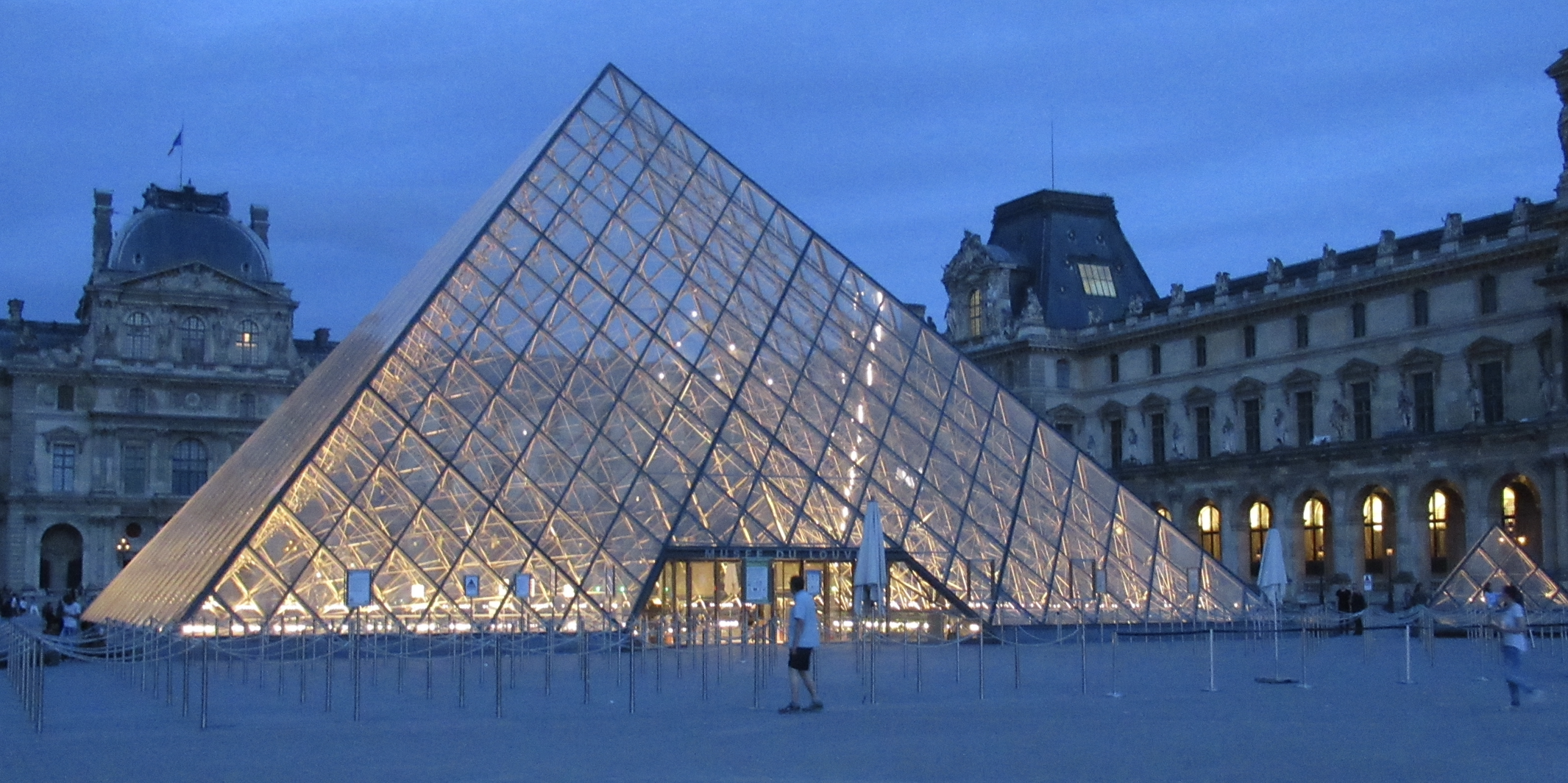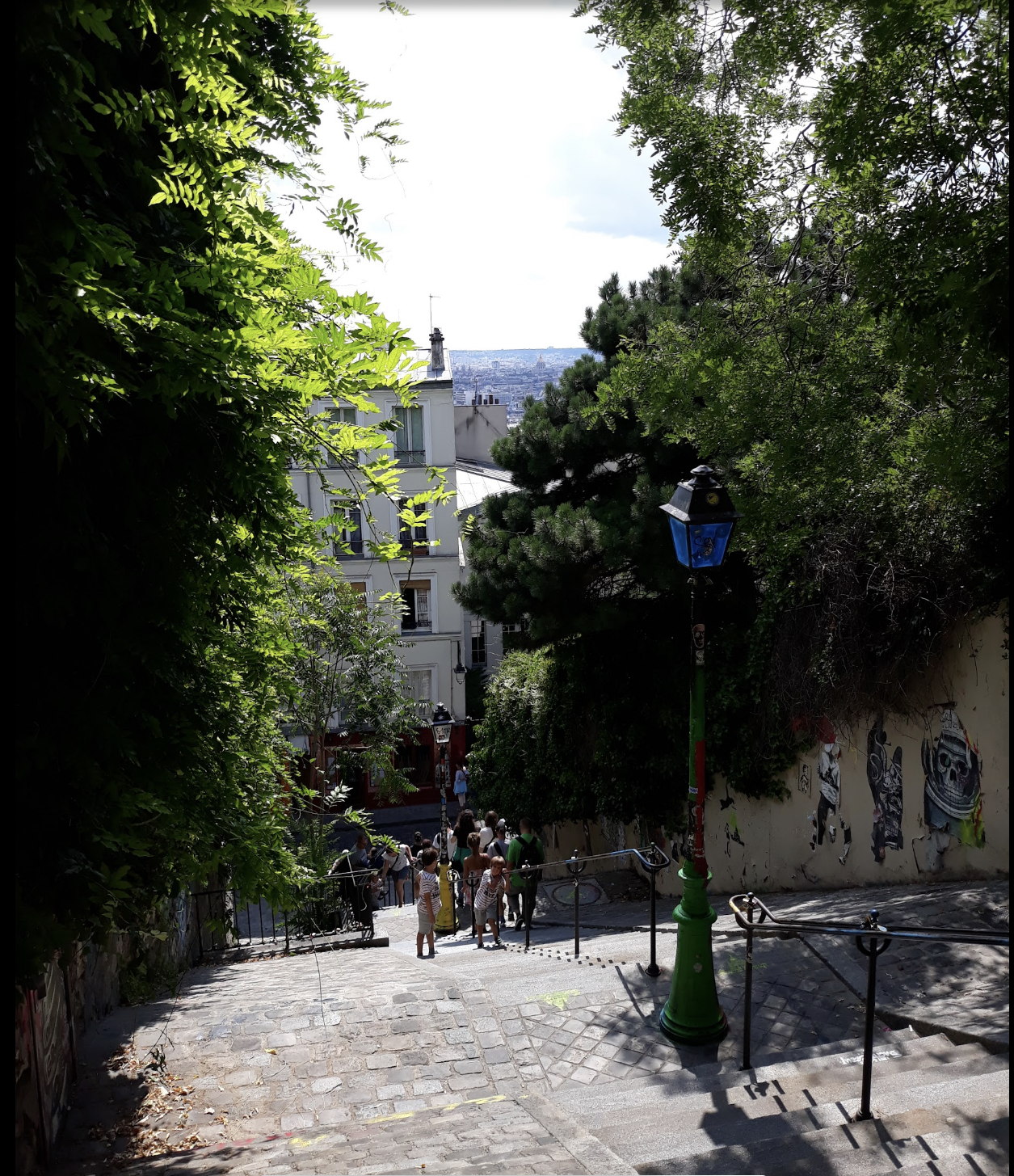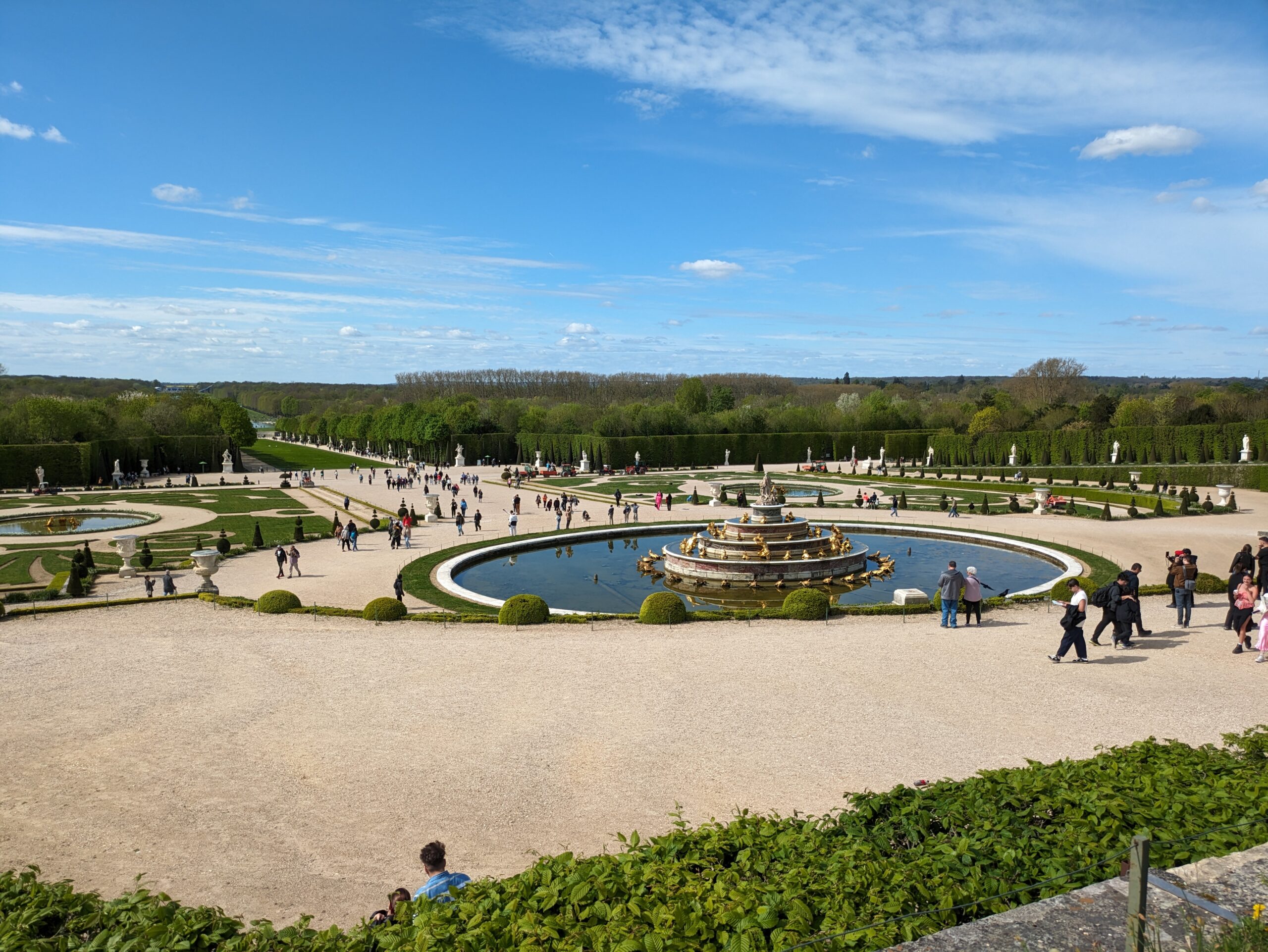With the rest of the afternoon left to us, we went to visit the Pantheon. This would be my first stab at a long-haul, heavy duty walking experience. The Pantheon was about half a mile from the our Metro station, on very hilly terrain, going up hill most of the way to the place. Add all that strolling about inside, I was looking at a good amount of time on my feet. Before I left, being able to walk for long periods of time was near the top of my list of things of concern. In the weeks leading up to this trip, I was very conscious of this and worked on increasing my walking stamina as much as I could. This took the form of walking for at least one mile every day or so. Nothing fancy. No pedometer. No huffing and puffing or tracking heart rate or trying to maintain some predetermined speed. Just walking a route I knew was about a mile long and doing it frequently. This particular regimen worked for me. (I would encounter problems walking around later in the trip, but they were not related to fitness.)
The Pantheon is a final a resting place of great status. I was curious about what you do in France to have enough caché to put you there. Well, a variety of things, it turns out. Besides the expected generals and politicians, other figures entombed in the Pantheon included great authors (Dumas, Hugo, and Zola all in the same crypt – one wonders if their ghosts come out occasionally to chat like a writer’s group), philosophers (Voltaire and Rousseau – same thought, philosophical discourse), scientists (Madame Curie and her husband – same thought, scientific questions).
When visiting famous places far from home, there’s often a bit of anticipation to see in person things you’ve only read about in books, where it is accompanied by laudatory text and explanations. But the experience of seeing something in person known only from textbooks can be much less exciting than expected. At the Pantheon, for me, it was Foucault’s Pendulum. I understand what Foucault’s Pendulum is, I understand why it’s so important, I understand why it’s so precious to civilization, yet find myself wondering if they couldn’t have added some sparklers or ribbons or neon on it to jazz it up. (I know, I know. Too commercialistic. Too Barnum & Bailey. Still…)
Next to the Pantheon is a church I had wanted to visit, Saint-Étienne-du-Mont, with its shrine dedicated to Ste. Genevieve. This amazing, pious woman lived in the Fifth Century. As Attila the Hun’s army was heading for Paris, she led a prayer marathon credited with averting the Huns and saving the city. Attila went to Orléans instead. Attributing her with bringing divine protection, she became the patron saint of Paris. Historians believe the Huns’ course change was caused less by divine intervention than by the desire to plunder riches, something in relatively short supply in fifth century Paris. Plundering Orléans was a much more lucrative undertaking. On the other hand, perhaps divine intervention put the bug in Attila’s ear. However it happened, Ste. Genevieve continued to play an active role in the history of Paris until she died at the ripe old age of eighty or ninety (people not sure of her exact date of birth or of death).
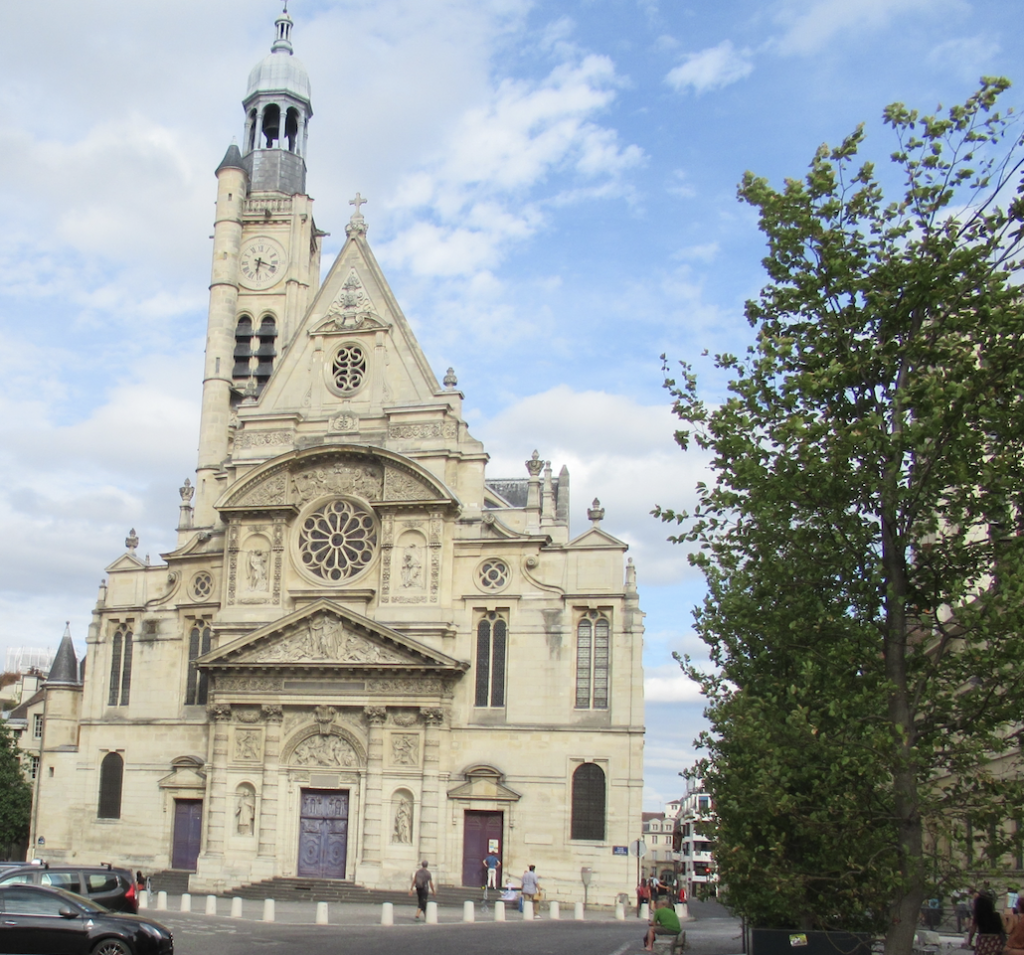
St. Etienne was on the way back to the Metro. However, I was a little unsettled about walking through like a tourist during a church service in progress. I took pictures of the outside, and started a mental list of things I want to go back to see.
